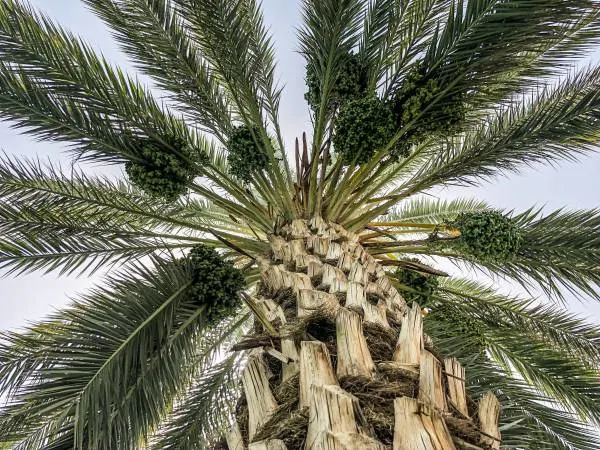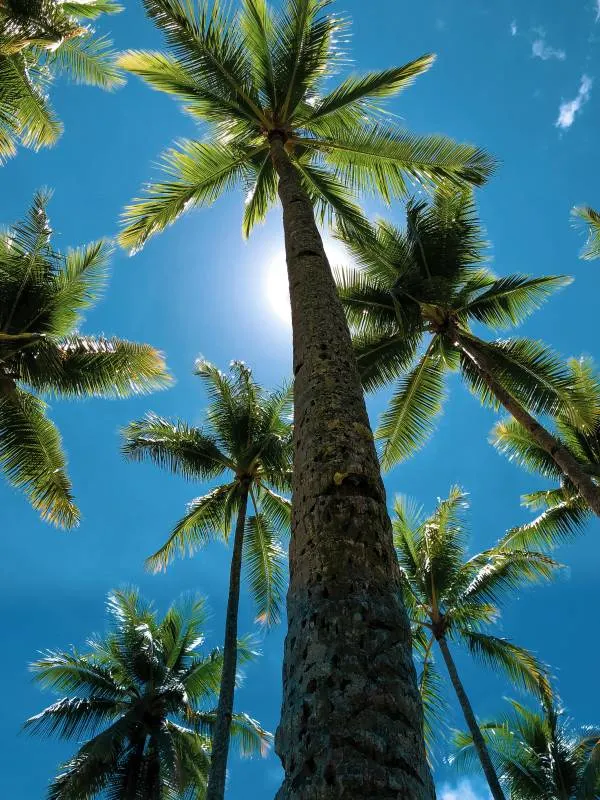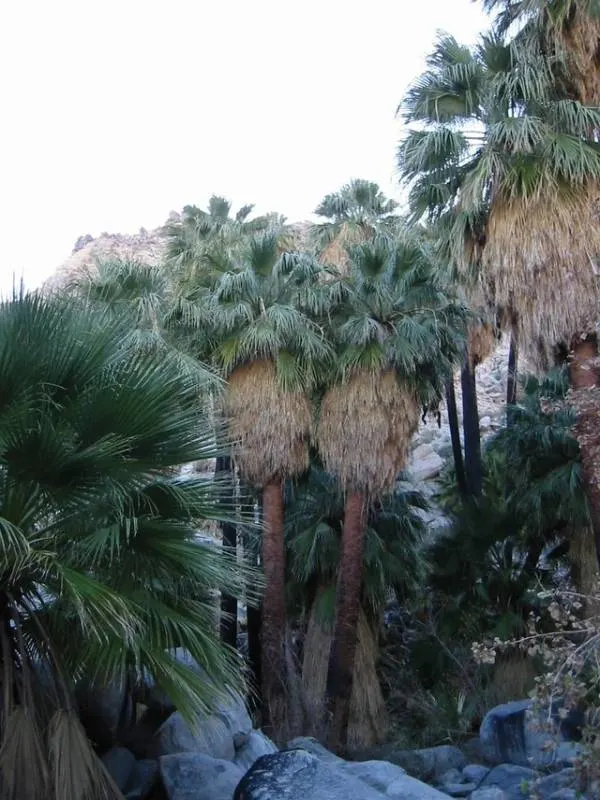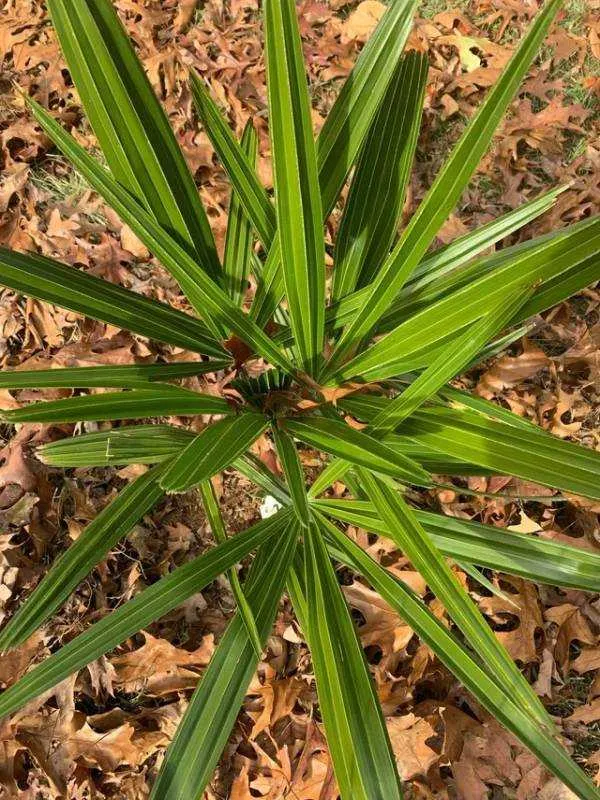Have you ever looked at the palm trees and wondered about their origin?
Many of us associate palm trees with tropical paradises. But the truth is that the palm tree has roots in various unexpected places.
Actually, the palm family, with about 2,600 species, has a long history that goes back millions of years.
But you don’t need to think much about it!
In this blog post, we’ll tell you the surprising locations where palm trees have flourished.
So, get ready for an informative adventure as we are going to explore where palm trees truly belong.

Where Are Palm Trees Native?
Palm trees are true globetrotters.
They originally came from Africa and then spread their leafy canopies across the world.
From the sandy shores of Southeast Asia, where the coconut palm reigns supreme, to the lush landscapes of Africa, where the oil palm finds its home, these elegant giants have learned to thrive in many different places.
But their adventures didn’t end there.
In the Americas, they’ve settled comfortably in spots like the Amazon rainforest and the Southern United States, where the palmetto palm stands tall.
These trees are pretty adaptable, from hanging out in coastal areas with salty winds to chilling in arid deserts with scorching sun.
This versatility has led to their cultivation and naturalization in many corners of the world.
While we often associate palm trees with tropical paradises, they’ve also become iconic symbols in subtropical and even temperate regions, thanks to their timeless beauty and ability to thrive in various conditions.
Where Do Palm Trees Grow Native?
Palm trees are famous symbols of tropical places. They have a unique look that makes you feel relaxed.
But did you know palm trees are found in many different parts of the world?
They grow on various continents and in different areas. Here are some of the key places where palm trees grow native:
South America
In the lush continent of Latin America, palm trees flourish in different types of environments. The Amazon rainforest, one of the world’s most biodiverse regions, is home to various palm species.
In countries like Brazil and Colombia, you can find the majestic Açaí palm, which produces the nutrient-rich Açaí berries.
This palm tree not only provides food but also contributes to the rainforest’s complex web of life.
The South American continent also hosts the iconic Coconut palm. It is known for its sweet, refreshing fruit and versatility in various tropical cuisines.
South America’s different landscapes and climates are perfect for palm trees. That’s why they’re such a big part of the continent’s natural and cultural history.
Africa
Africa is a continent with lots of different palm trees that are adapted to a variety of environments.
In the arid Saharan regions of Northern Africa, you’ll find the Date palm. Date palms are super important because they give them sustenance as well as the shade in the desert oasis.
If we talk about West Africa, there’s the Oil palm. It is a critical economic crop, producing palm oil used in a wide range of products.
As you head further south in Africa, you’ll spot the famous Baobab tree. In Madagascar, they call it the “Avenue of the Baobabs.”
Although it’s not a true palm tree, it looks really unique, and it’s a big deal in the local culture.

Middle East
The Middle East, with its arid and semi-arid landscapes, has some of the world’s most historically significant palm trees.
The Date palm, known scientifically as Phoenix dactylifera, is the big star here. These tough trees love hot deserts and play a central role in the region’s culture and economy.
People in this region have been growing Date palm for thousands of years. These trees give them food, shelter, and materials for all kinds of stuff.
Apart from the Date palm, this landscape also has other types of palm trees that have adapted to harsh desert conditions, which makes them a vital part of the region’s ecosystems.
Caribbean Islands
The Caribbean Islands are synonymous with paradise, and palms are a big part of the beautiful scenery that attracts tourists from all over the world.
These islands have many palm trees that belong here, adding to the tropical charm.
One of the most famous palms in the Caribbean is the Coconut.
It’s tall and slim, with lots of coconuts, and that is what you probably picture when you think of a stunning beach.
The beaches here are lined with palm trees, swinging gently in the ocean breeze. It is what makes the Caribbean so perfect, and that is why visitors fall in love with it.

Indian Ocean
The Indian Ocean region, covering islands like the Maldives, Seychelles, and Mauritius, is a dreamland for palm trees.
These tropical heavens feature an array of native palm species that make the islands look incredibly beautiful.
One of the most iconic palm trees in this region is the Coco de Mer. It’s from the Seychelles and produces the largest in the plant kingdom. It only grows on a few islands, so it’s rare and protected.
The Maldives, with its bungalows over the water and palm-fringed beaches, is a hot spot for tourists, and Coconut palms thrive there.
Mauritius has something unique, too – the Round Island Bottle palm, which is super rare and critically endangered, showing how delicate the ecosystems are in this part of the world.
Indian Ocean palm trees not only provide aesthetics but also support the fragile island ecosystems and the tourism industry that relies on their beauty.
Which Palm Trees Are Native to the U.S.?
Palm trees are not native to the entire United States. But they do grow naturally in some parts of the country.
In the U.S., native palm species are primarily found in the southern and western regions with warm climates.
Let’s discuss in which parts of the U.S. palm trees grow naturally.
Royal Palm of Florida
Florida has many beautiful palm trees that paint its landscapes with tropical elegance.
One of the most impressive ones is the Royal Palm.
These palms can grow really tall, up to 60 feet! They have a slender, smooth-barked trunk and a bunch of long, elegant leaves on top.
In Florida, people really love the Royal palm.
You can find these majestic palms all over the state, but they’re especially happy in South Florida and along the Gulf Coast.
Palms from California
In California, you’ll often see palm trees, and you might wonder if they belong here naturally.
Well, the answer is yes!
California has different kinds of palm trees, but the most famous one native to the state is the California fan palm, scientifically known as Coccothrinax argentata.
You can spot these special palms not just in California but also in some parts of Arizona and Nevada.
These tall trees with long leaves thrive in southern California, especially in places like Los Angeles and Beverly Hills.
Another palm that’s native here is the Washingtonia palm, which can grow up to 60 feet and is common in the deserts of Southern California.
So, when you’re in California and you see these famous palm trees, remember, they’re not just for looks – they’re a part of the state’s natural beauty!

Pritchardia Martii from the Hawaiian Islands
Hawaii, a beautiful tropical place in the United States, has lots of palm trees, with nineteen unique species calling these islands home.
One well-known misconception is that coconut palms are native to Hawaii, but they were actually introduced by early Polynesian settlers.
The real Hawaiian natives are the Pritchardia palms, also called Loulu palms, and there are about 16 different species of them.
These species vary in:
Sizes
Colors
Flowers
Appearance, and
The area where they grow healthy
For example: Pritchardia martii thrives on Oʻahu, while Pritchardia hillebrandii hails from Molokaʻi.
In the stunning landscapes of Hawaii, you’ll see lots of palm species, like the Traveler’s Palm (Ravenala madagascariensis) and the elegant Bottle Palms (Hyphorbe lagenicaulis), enhancing the beauty of the capital city, Honolulu.
These palms, especially the ones from the Pritchardia group, don’t just look good; they also show how unique and special Hawaii’s nature is.
Saw Palmettos Palm from Georgia
Georgia has a bunch of different palm trees, with four native species that are also found in Florida.
These are:
Dwarf Palmetto
Cabbage Palm
Saw Palmetto
Needle palm
These palms really like the southern part of Georgia called the Coastal Plain, which offers the ideal climate for these trees. But you can also find Dwarf palmettos and Needle palms in the Piedmont region, even though they’re more concentrated in the south.
One palm that stands out in this region among all is the Georgia palm. It’s a bit smaller, growing to about 15 feet, and possesses a skinny trunk and lovely fan-shaped leaves.
You’ll see it a lot in Georgia, especially along the coast.
And don’t be surprised if you come across the saw palmetto palm here, too. It’s originally from Florida but also grows wild in Georgia, reaching up to 25 feet in height.
Needle Palm from Texas
Texas is like a palm tree paradise!
There’s the tall Texas palm, which can grow up to 60 feet high and has a skinny trunk with long, slender leaves. Then there’s the stout and fan-shaped sabal palm, which is native to Texas and grows up to 25 feet tall.
These palm trees are everywhere in the Lone Star State.
But wait, there is more!
In the Rio Grande Valley, you’ll see lots of majestic Texas palms.
In McAllen, they even call it the “City of Palms.”
And Houston is not to be left out. It proudly has three types of native palms: the Dwarf Palmetto, Mexican Palm, and Texas Palmetto.
Texas is truly a haven for palm trees!

That’s all!
Let’s move toward the conclusion and summarize the talk here.
Conclusion!
Palm trees are like nature’s globetrotters.
They originally come from Africa but spread their leafy charm to many unexpected places.
From the Amazon rainforest in South America to the sunny shores of the Caribbean Islands, these elegant giants have found cozy spots worldwide.
In Africa, they come in different flavors, like the Date palms in the desert and the iconic Baobab tree down south.
The Middle East has its Date palms, too, a big deal for thousands of years. And let’s not forget the Indian Ocean, where the rare Coco de Mer shows off.
In the U.S., palm trees enjoy the warmth of the southern and western regions.
So, whether you’re lounging on a tropical beach, strolling through an American city, or admiring the unique palms of the Indian Ocean, palm trees bring a touch of paradise to our world.
If you really find this post helpful, don’t forget to mention your thoughts in the comment section below.
Best Regards,
Moiz Atiq.
